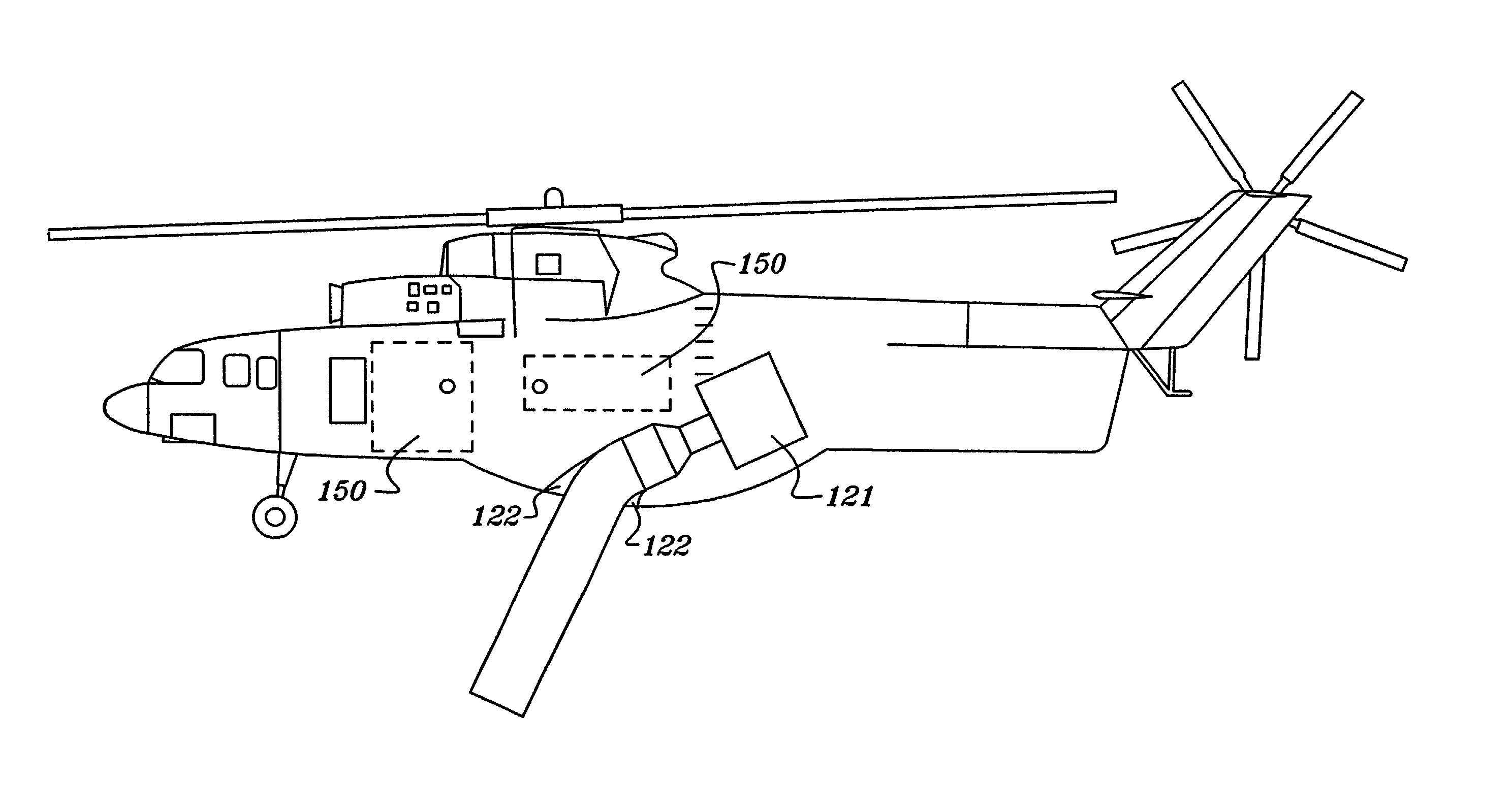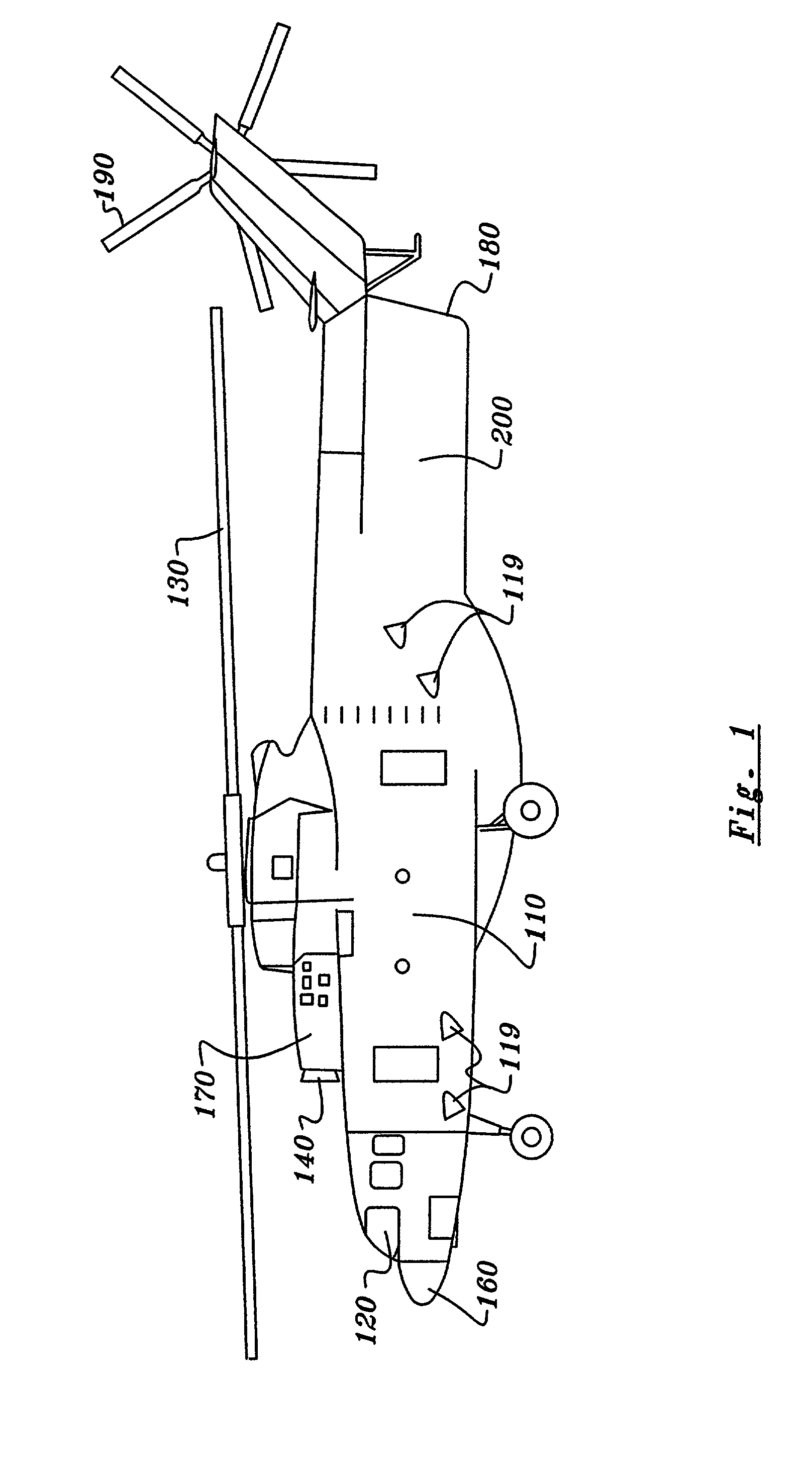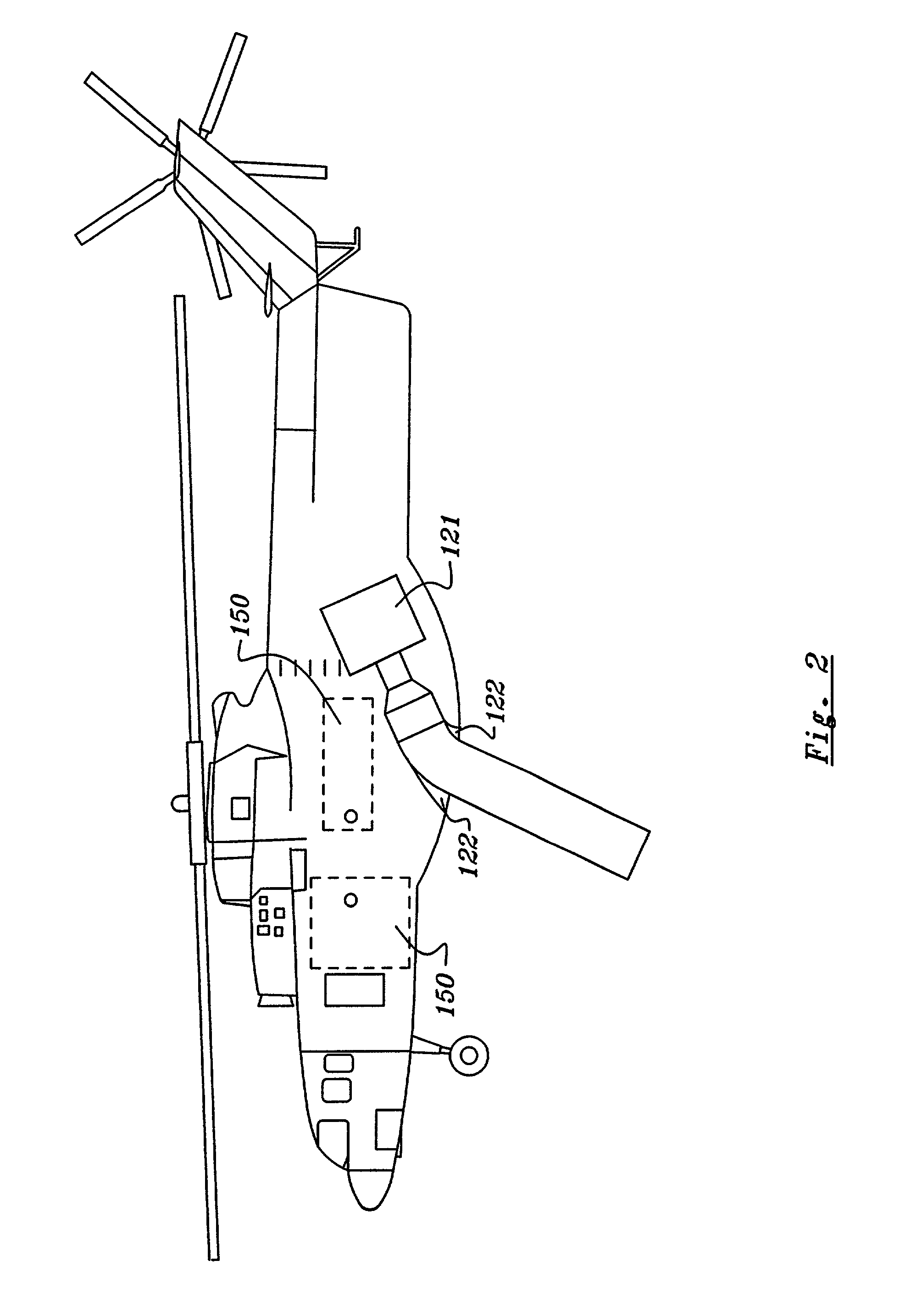Airborne fire fighting system
a fire fighting system and airframe technology, applied in the direction of rotorcraft, jet type power plants, power plant arrangements/mountings, etc., can solve the problems of crew confusion or disorientation, change the direction of fire, and impossible control
- Summary
- Abstract
- Description
- Claims
- Application Information
AI Technical Summary
Benefits of technology
Problems solved by technology
Method used
Image
Examples
Embodiment Construction
--2
[0120] This invention offers numerous other applications. Following paragraphs describe the problems of snow and icing and the solution of snow removal and deicing provided by AFFS.
[0121] Snow and ice frequently cause major problems for both private individuals and public authorities. Airport runways are deemed to be unserviceable after or during heavy snowfalls. Snow ploughs are the main means of keeping runways and perimeter service lanes open but the huge acreage is often too much for the machines and the only option is to close the airport.
[0122] Where snow falls continuously on a highway, big drifts build quickly causing major disruptions where the traffic flow is heavy. Snow ploughs are the accepted means to disperse the drifts but it can be a slow process with snow piling up behind the machine faster than it can be cleared in front. Ice is on the road surface can quickly bring about a blockage when vehicles lose their grip on the surface and cannon into each other.
[0123] R...
PUM
 Login to View More
Login to View More Abstract
Description
Claims
Application Information
 Login to View More
Login to View More - R&D
- Intellectual Property
- Life Sciences
- Materials
- Tech Scout
- Unparalleled Data Quality
- Higher Quality Content
- 60% Fewer Hallucinations
Browse by: Latest US Patents, China's latest patents, Technical Efficacy Thesaurus, Application Domain, Technology Topic, Popular Technical Reports.
© 2025 PatSnap. All rights reserved.Legal|Privacy policy|Modern Slavery Act Transparency Statement|Sitemap|About US| Contact US: help@patsnap.com



